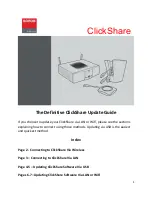
2200
E
EXXPPO
OSSU
URREE GGU
UIIDDEE
The purpose of a strobe is to illuminate the subject and bring out the subject's true
colors. Due to the loss of color when light passes through water, move in on your subject
to photograph thru as little water as possible.
The maximum recommended lighting distance underwater with any brand strobe is
1.8m (6'). Selecting a subject at a greater distance underwater will provide mainly bluish
color silhouette type images.
EEXXPPO
OSSU
URREE LLAABBEELL ______________________________________________________________________________________________________
The exposure label information is primarily intended for use with traditional film
cameras since digital still cameras may require less light for proper exposure. The
exposure label is compatible with TTL/Auto and Manual modes and references the
DS125 strobe output without the diffuser installed.
TTTTLL//AAuuttoo M
Mooddee eexxaam
mppllee
for 100 ISO film speed:
If you select f-8, you can shoot subjects up to 1.2m (4’) away.
If you select f-4, you can shoot subjects up to 2.5m (8') away; however, underwater
we recommend selecting subjects no farther than 1.8m (6') away.
FFuullll PPoow
weerr M
Maannuuaall M
Mooddee eexxaam
mppllee
for 100 ISO film speed:
If you select f-8, the subject should be 1.2m (4’) away for proper exposure as
indicated by the letter
M
M
.
11//44 PPoow
weerr M
Maannuuaall M
Mooddee eexxaam
mppllee
for 100 ISO film speed:
The difference between
eeaacchh ppoow
weerr sseettttiinngg
is one full f-stop; therefore, moving
from Full to 1/4 power decreases the light output by two full f–stops. If you select
f-8, then reference two less f-stops (two numbers greater) than f-8 in the chart,
which is f-16. Subject should be 0.6m (2’) away for proper exposure.
CCAAM
MEERRAA AAPPEERRTTU
URREE __________________________________________________________________________________________________
For balanced lighting between your subject and the background, meter the
available light and set the camera aperture accordingly. Using a
narrower aperture
darkens the background. A
wider aperture
lightens the background.
..........
..........
..........
..........
..........
........
.....
..........
S U B S T R O B E D S 1 2 5
F I L M I S O R AT I N G
D I S TA N C E
M
M
M
M
M
M
M
M
0 . 3 0 . 6 1.2 2.5
5 m
1
2
4
8
16ft
25 50 100 200 400 800
25 50 100 200 400 800
2.8 4 5.6
2.8 4 5.6 8
2.8 4 5.6 8 11
2.8 4 5.6 8 11 16
4 5.6 8 11 16 22
5.6 8 11 16 22
8 11 16 22
11 16 22
1199
C
CAAM
MEERRAA CCO
ON
NN
NEECCTTIIO
ON
N
IIKKEELLIITTEE TTTTLL CCO
ORRD
DSS ____________________________________________________________________________________________________
#
#44110033..5511
Single strobe cord
#
#44110033..5522
Dual strobe cord
These cords connect Ikelite Substrobes to Ikelite camera housings. Use TTL/Auto
or manual exposure modes.
CCoonnnneecctt IIkkeelliittee H
Hoouussiinngg
1. Make sure all components are dry. Clean and lightly lubricate the stem o–ring
and the housing connector threads. Check the o-ring for nicks or cuts.
2. Note the positioning of the receptacles and pins. Properly align the end of the
sync cord and insert into the housing connector. When using the #4103.51 cord,
both cord ends are identical; either end can be connected to the housing.
3. Hand-tighten the knurled retaining ring on the cord. Then push the connector
body further into the housing connector and continue to tighten the knurled ring.
N
NIIKKO
ON
NO
OSS TTTTLL CCO
ORRD
DSS FFO
ORR FFIILLM
M CCAAM
MEERRAASS ________________________________________________________
#
#44110044..66
Single strobe cord
#
#44110044..6622
Dual strobe cord
These cords connect Ikelite Substrobes to Nikonos IV, V and RS cameras, and non-Ikelite
housings for traditional film cameras (see next section if using a non-Ikelite housing for a
digital camera). Use either TTL/Auto or manual exposure modes with the Nikonos V / RS
or suitable TTL/Auto exposure camera housing. When using the Nikonos IV or a non-TTL
housing, set the strobe in the manual mode.
CCoonnnneecctt N
Niikkoonnooss CCaam
meerraa
1. Mount the camera tray underneath the Nikonos camera. Make sure all
components are dry. Clean and lightly lubricate the stem shaft, o-ring, and
retaining ring threads. Check the stem o-ring for nicks or cuts.
2. Align the index groove with the white dot of the camera flash socket, and insert
the stem into the camera socket.
3. Rotate the retaining ring counterclockwise until it mates with the camera socket
threads. Then carefully rotate the retaining ring clockwise and thread it into the
camera body until snug.
CChheecckk CCoonnnneeccttiioonn ffoorr N
Niikkoonnooss VV &
& RRSS
Turn ON the strobe and place camera in the TTL mode. Advance the camera to
frame #1 and the ISO dial to 800 or above. The camera's ready light will blink if the
connection is good. Afterwards, reset ISO dial for the correct film speed.
N
NIIKKO
ON
NO
OSS CCO
ORRD
DSS FFO
ORR D
DIIGGIITTAALL CCAAM
MEERRAASS __________________________________________________________
#
#44110044..3311
Single strobe cord
#
#44110044..3322
Dual strobe cord
Other brand housings for digital still and dSLR cameras do not offer TTL compatible
circuitry so only manual exposure is offered for the Ikelite Substrobes. Select the non-TTL
Nikonos cord #4104.31 or #4104.32 for compatibility when connecting to the Nikonos-style
female socket on the non-Ikelite housing. Follow the procedure referenced above to connect
the Nikonos cord to the housing.


































